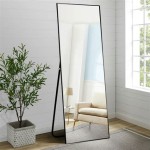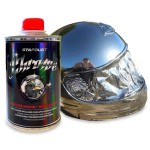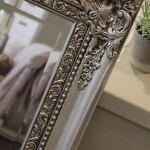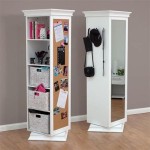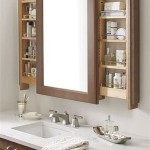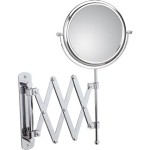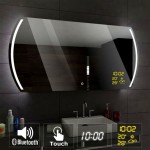How to Hang a Mirror on Drywall
Hanging a mirror on drywall requires careful planning and execution to ensure both the mirror's safety and the wall's integrity. This guide outlines the necessary steps and considerations for a successful installation.
Assessing the Mirror and Wall: Before beginning, determine the mirror's weight and dimensions. This information is crucial for selecting appropriate hanging hardware. Inspect the drywall for any existing damage or obstructions, such as electrical wiring or plumbing. Use a stud finder to locate wall studs. While hanging heavy mirrors directly on studs is recommended, lighter mirrors can be hung using specialized drywall anchors.
Choosing the Right Hanging Hardware: The hardware required depends on the mirror's weight and hanging method. Common options include D-rings, wire, and French cleats. For heavier mirrors, consider using heavy-duty D-rings and picture wire rated for the mirror's weight. French cleats offer a robust and stable hanging solution for very heavy mirrors.
Marking the Wall: Accurate measurements are critical for proper mirror placement. Decide on the desired height and mark the wall accordingly. If using D-rings and wire, measure the distance between the rings on the back of the mirror. Transfer this measurement to the wall, marking the locations where the hanging hardware will be installed.
Installing the Hanging Hardware: For mirrors hung on studs, use screws specifically designed for wood studs. Ensure the screws are long enough to penetrate the studs securely. If using drywall anchors, select anchors rated for the mirror's weight. Follow the manufacturer's instructions for proper anchor installation. Ensure the chosen hardware is installed level and at the correct height.
Using D-Rings and Wire: Attach D-rings to the back of the mirror, ensuring they are securely fastened and evenly spaced. Cut a length of picture wire slightly longer than the width of the mirror. Thread the wire through each D-ring, creating a loop. Wrap the excess wire around itself several times to secure it. The wire should form a triangle when the mirror hangs.
Utilizing French Cleats: A French cleat system consists of two interlocking pieces of wood, one attached to the wall and the other to the back of the mirror. The angled design of the cleats provides a secure grip. Install the wall portion of the cleat directly onto studs using screws. Attach the mating cleat to the back of the mirror, ensuring proper alignment.
Hanging the Mirror: Carefully lift the mirror and position it on the installed hardware. If using D-rings and wire, hook the wire onto the installed hooks or screws. For French cleats, simply slide the mirror cleat onto the wall cleat until it locks into place. Gently tug on the mirror to ensure it is securely hung.
Securing the Mirror (Optional): For added stability, especially in areas prone to vibrations, consider securing the bottom of the mirror to the wall. Small, clear adhesive bumpers can be used to prevent the mirror from shifting or tilting. These bumpers are discreet and won't damage the wall or mirror.
Alternative Hanging Methods: Adhesive hangers are an option for lightweight mirrors. These hangers use strong adhesive to bond the mirror directly to the drywall. Ensure the wall surface is clean and smooth before applying adhesive hangers. Follow the manufacturer's instructions carefully for optimal adhesion.
Safety Precautions: When handling heavy mirrors, always seek assistance. Wear appropriate safety gear, including gloves and eye protection. Never hang a heavy mirror on damaged drywall. If unsure about any aspect of the installation process, consult a professional handyman or contractor.
Choosing the Right Mirror for the Space: Consider the size and shape of the mirror in relation to the surrounding furniture and décor. Large mirrors can make a small room appear larger, while strategically placed smaller mirrors can enhance natural light and create visual interest. The mirror's frame should complement the overall style of the room.
Preparing the Wall Surface: Before hanging the mirror, ensure the wall surface is clean and dry. Patch any holes or imperfections in the drywall with spackle. Sand the patched areas smooth and apply a fresh coat of paint if necessary. This will create a smooth and even surface for the hanging hardware.
Checking for Levelness: After hanging the mirror, use a level to ensure it is straight. Adjust the hanging hardware as needed to achieve perfect levelness. A slightly tilted mirror can be visually distracting and detract from the overall aesthetic.
Considerations for Bathroom Mirrors: When hanging a mirror in a bathroom, consider the humidity and moisture levels. Choose moisture-resistant materials and ensure proper ventilation to prevent mildew growth. Apply sealant around the edges of the mirror to further protect it from moisture damage.

How To Hang A Heavy Mirror On Drywall Stas Picture Hanging Systems

How To Hang A Large Or Heavy Mirror

How To Hang A Heavy Mirror

How To Hang A Heavy Mirror Diy Family Handyman

How To Hang Heavy Mirrors Frames Without Nails 3m

A Better Way To Hang Heavy Mirror Hanging Pictures

How To Hang A Heavy Mirror With French Cleat

Our Hopeful Home How To Use 3m Claw Drywall Picture Hanger

How To Hang A Very Heavy Picture Or Mirror The Best

Mounting A Mirror On Drywall Top 8 Ways For Savvy Handyman


